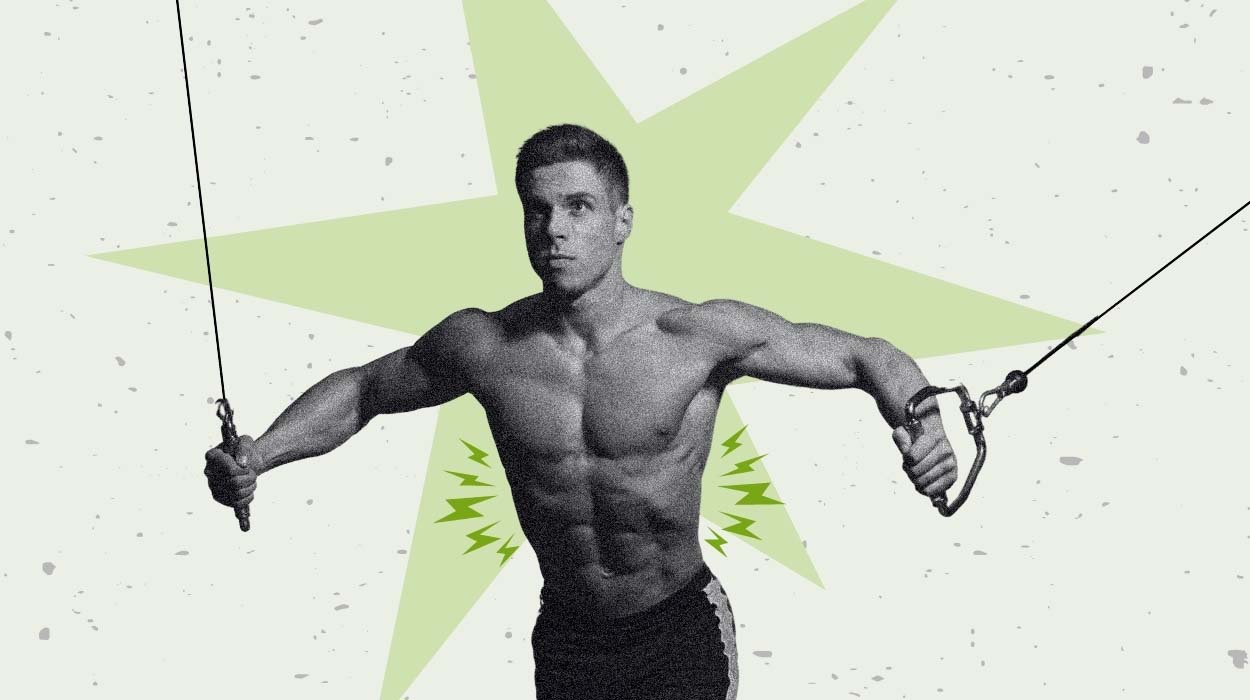
The Pectoralis major and Pectoralis minor are the two muscles that comprise the pecs (also known as the pectoral muscles). Most of the lower chest muscle fibers are made up of the pec major. The major is situated above the minor, which is much smaller. These muscles are frequently to blame for people’s rounded shoulders because they are frequently tight, which results in bad posture, rounded shoulders, etc. How to fix rounded shoulders may also be resolved by exercising these muscles. Not just popping your pecs or doing a lower chest workout will give you a strong lower chest.
If you want to develop a distinct, well-defined chest you should concentrate on the lower chest and on what to eat before a workout. Here’s a detailed look at the best lower chest exercises for building stronger, better-defined pecs.
The Best Lower Chest Exercises
All chest exercises work the lower pec; however, some moves specifically target the lower pectoral muscle fibers.
Here are the five best exercises for lower chest muscles.
Lower Chest Workout 2024
We’ll show you how to perform lower chest workouts and how to begin training them, regardless of whether or not you possess access to an incline bench, cables, or simply manual weight movements.
Incline Push-Ups
The incline push-up is a modified version of the traditional push-up that improves overall upper body strength, enhances muscular endurance, and promotes better shoulder stability. By incorporating this exercise into your regular routine, you can target the lower chest specifically, which can result in a more balanced and sculpted chest appearance.
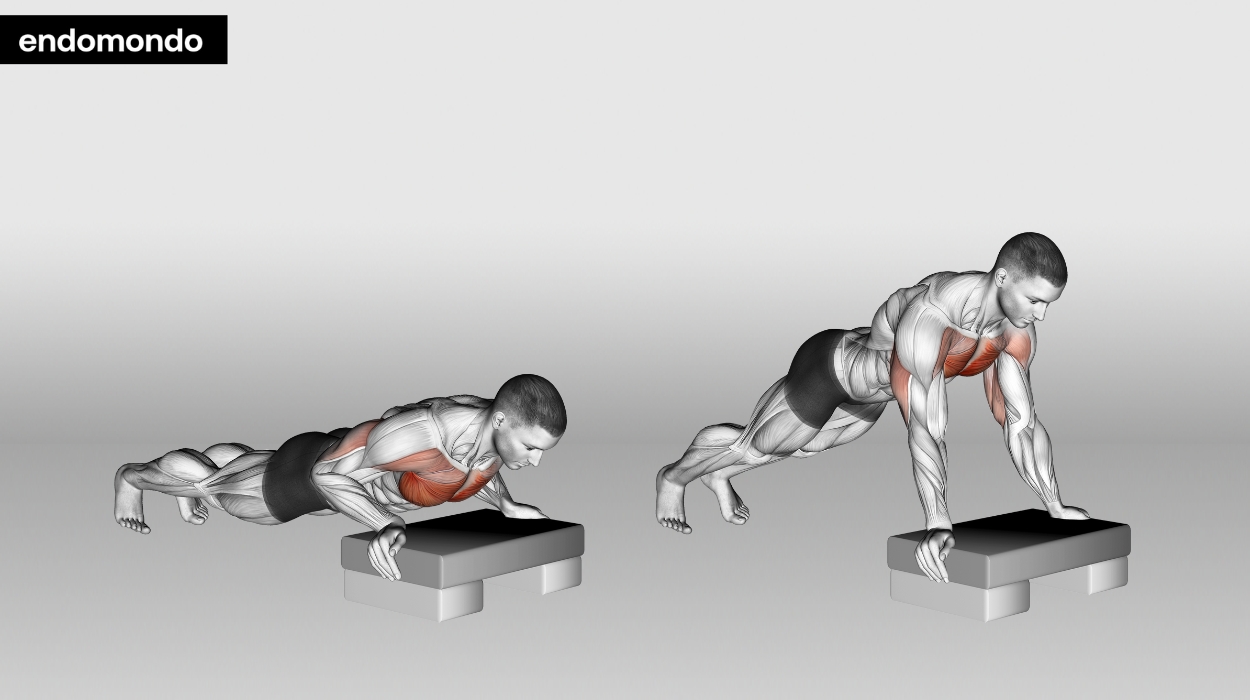
How to do:
- Put both hands on a safe, elevated area, such as a bench or stairwell. Maintain hip-width separation and straight legs. The tips of your toes must be flexed and touching the ground. The distance between your hands and shoulders should be just a hair wider than the distance between your feet.
- Grab the raised area with your hands, then turn your shoulders out to activate your lats. Pretend your hips, shoulders, and core are in a straight line. Next, squeeze the glutes and quads. Throughout the movement, the tip of your chin should stay tucked as if carrying an egg. Start each repeat from this location.
- Keeping just a slight bend in your elbows, draw your chest towards your hands as you descend. As you descend towards the raised surface, the shoulder blades should retract. Your body should be lowered until the upper arms parallel your back. The wrists should be below your elbows, and the elbows must be at a 45-degree angle from your torso.
- Squeeze your chest and extend your elbows to move upward while keeping your alignment.
- Finish the rep by tightening your triceps and lower chest.
Tips:
- Maintain proper alignment to engage the correct muscles and prevent strain on your lower back.
- Focus on a slow and controlled descent as you lower your chest toward the bench for better muscle activation and to ensure proper form.
- Gradually decrease the incline to increase the difficulty and challenge your muscles over time.
Optimal Sets and Reps: 2-3 sets of 10–20 reps.
Chest Dips
Dips are commonly referred to as upper body exercises. They are known as squats that target here, leaning forward focuses on the lower chest, but be cautious because doing so puts your anterior shoulder at risk.
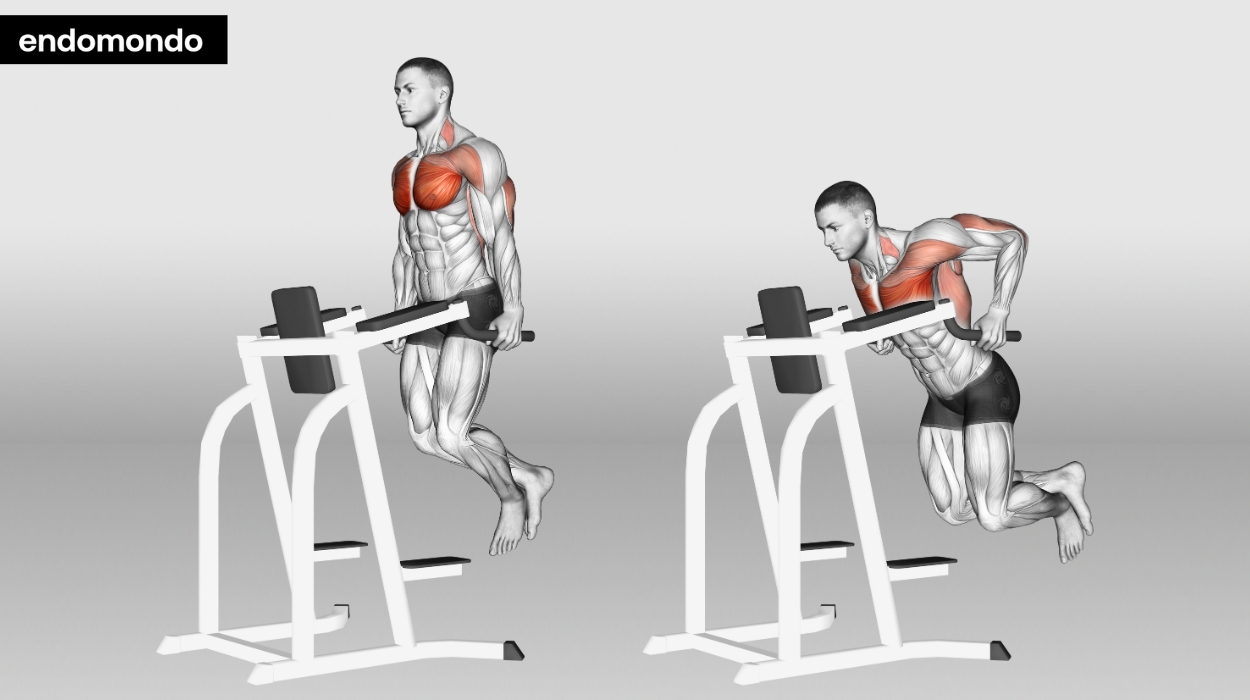
How to do:
- Holding the dip bars firmly while standing between them can help you to engage your upper back. Keep your upper body up and shoulders back.
- To focus on the lower chest, squeeze the bar and push yourself upward while maintaining a forward slant.
- When you’re close to lockout (full extension of joints), flex your triceps behind your back, rest briefly, then slowly lower yourself and repeat.
Tips:
- Position your hands slightly wider than shoulder-width apart for optimal engagement of the chest muscles.
- Keep your back straight and avoid excessive swinging or arching of your lower back.
- Aim to perform chest dips through a full range of motion for greater muscle activation.
Optimal Sets and Reps: 4 sets of 10-12 reps.
Cable Crossovers
The path of motion cable crossovers go through makes them ideal for hitting the lower portion of the pectorals. They also enable strong stretches at the top and strong peak contractions at the bottom, each of which can stimulate growth.
Many weightlifters view this as a contouring exercise rather than a proper muscle-building exercise, but there is no difference. When done with appropriate resistance, concentration, and intensity, any activity can and will help you gain muscle.
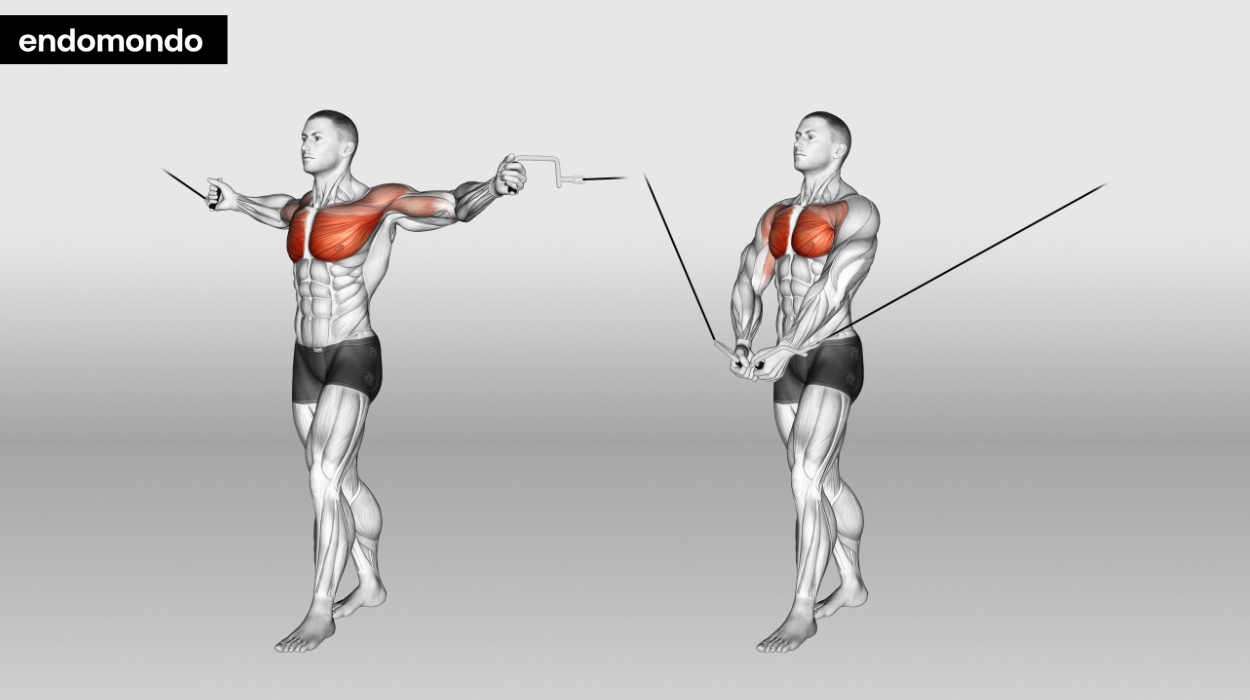
How to do:
- Center yourself on the cable machine. Pick a mid-range weight and put the pulleys high. Each hand should hold a handle.
- Step forward and firmly place your foot on the ground. Your core should be tightened as you lean forward.
- Breathe in a while, extending your hands in a broad arc. For one full repetition, bring your hands to your body’s midline. Repeat the exercise 10-15 times.
Tips:
- Set the cables at a height that aligns with your chest level to maintain proper form and target the chest muscles effectively.
- Avoid leaning forward or backward during the exercise.
- Focus on the squeeze of your chest muscles to maximize muscle activation.
Optimal Sets and Reps: 3-4 sets of 10-12 reps.
Jackhammer Pushdown
You can target and develop the lower chest by slightly altering the triceps pushdown exercise. First, lean forward and spread your elbows wide during the jackhammer pushdown. This position isolates the lower muscle groups and minimizes the involvement of the triceps.
Additionally, the cable machine’s consistent tension and vast range of motion make it a powerful lower chest builder. The ROM and consistent compression of the cable machine provides more hypertrophy potential. This exercise works well to isolate and strengthen the lower chest region.
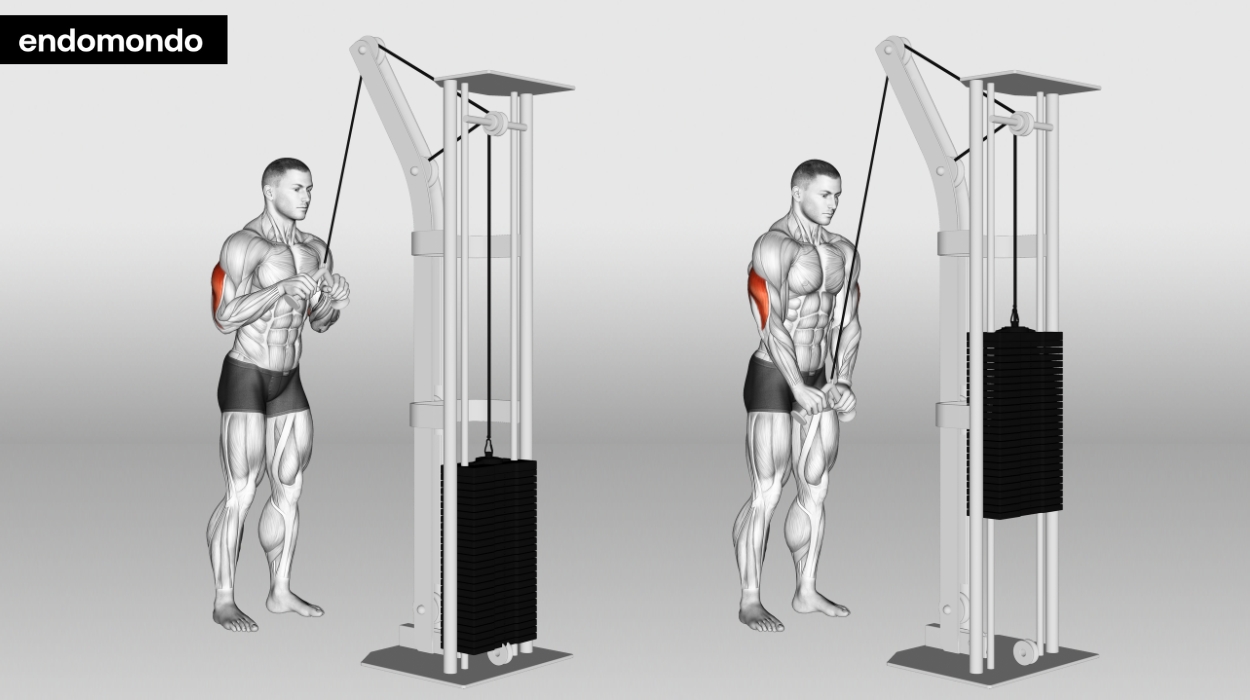
How to do:
- Use the same grip you’d use for a triceps pushdown device in front of the cable machine while standing there. Lean forward and grab the handle firmly as you approach the machine closely with the cord draped over your shoulder.
- Spread out your elbows. Push down to widen the elbows after reaching the movement’s peak. Open the chest and raise the elbows, returning slowly to the beginning position.
Tips:
- Avoid using momentum or swinging your body to generate force.
- Stand facing a cable machine with your feet shoulder-width apart and place your hands slightly wider than shoulder-width apart for proper positioning.
Optimal Sets and Reps: 2-4 sets of 10-15 reps.
Decline Dumbbell Fly
The decline dumbbell fly version is done on a modest decline that more specifically targets the lower chest muscles slightly than the flat and incline forms. Compared to the incline variation, this lower chest exercise lessens stress on the anterior shoulders, much to the decline bench press.
This further separates the lower chest muscles because the triceps and shoulders aren’t as actively engaged.
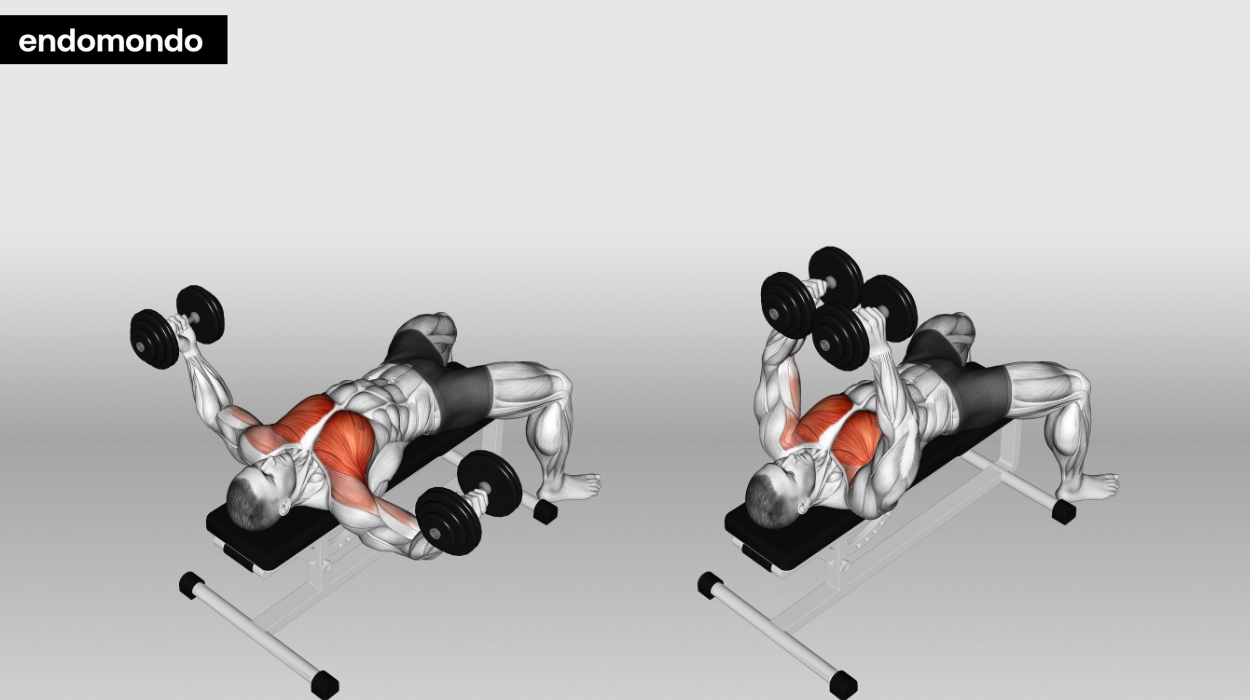
How to do:
- Lay down on the decline bench[1] with your feet fastened at the end and two dumbbells gripped with a neutral grip close to your chest.
- After that, lift the weights until they are locked out. Then, to prevent elbow pain, slide the weights laterally while keeping your elbows slightly bent.
- Squeeze your chest muscles when the dumbbells are at chest height, then return the weights to the starting position and repeat.
Tips:
- Adjust the decline bench to a comfortable angle that suits your fitness level and allows for a proper range of motion.
- Maintain proper form for optimal results.
- Choose an appropriate weight that challenges you without compromising your form.
Optimal Sets and Reps: 3-4 sets of 10-12 reps.
Benefits Of The Lower Chest Workouts
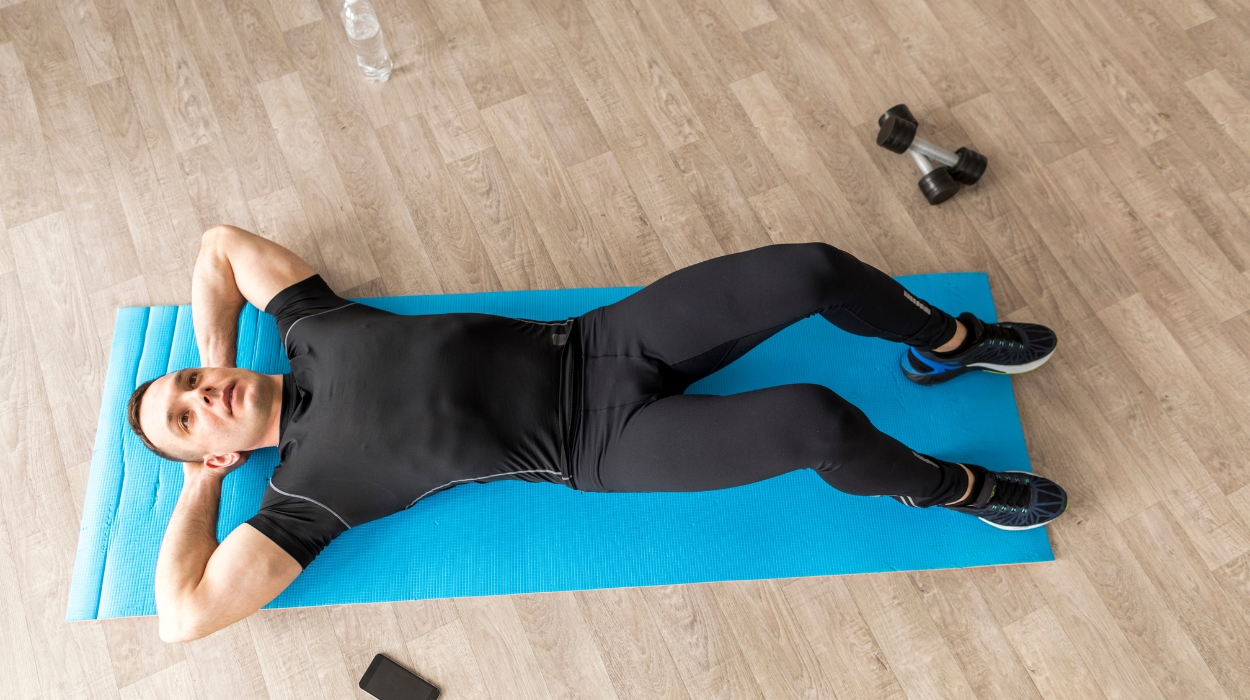
Improved Posture
The chest plays a significant function in helping healthy posture since it is one of the main muscles in your upper body and determines your shoulder position with its length and strength. In addition, the upper back, shoulder, and pecs stabilize the entire shoulder region, improving your overall body posture.
Deeper And Improved Breathing
By expanding and contracting the ribcage, chest muscles that have been lengthened and strengthened enable deeper breathing. Your ribcage expands with each breath, and since your pecs are connected to it, their tightness or shortness will limit how deeply you can inhale.
Better Athletic Performance
The pecs aid in tackling and fending off opponents on the football pitch. Additionally, they help throw the football, baseball, and tennis ball faster and higher.
Better Range Of Motion
Well-defined lower pecs offer plenty of benefits.
Working your lower chest muscles and training them with different lower pec exercises greatly increases the range of motion of arms and shoulders. Because the more you stretch the muscles and ligaments, the more joint mobility will increase. This results in an improved range of motion and reduces the muscles’ stiffness and tightness.
Other Tips For Well-Defined Pecs
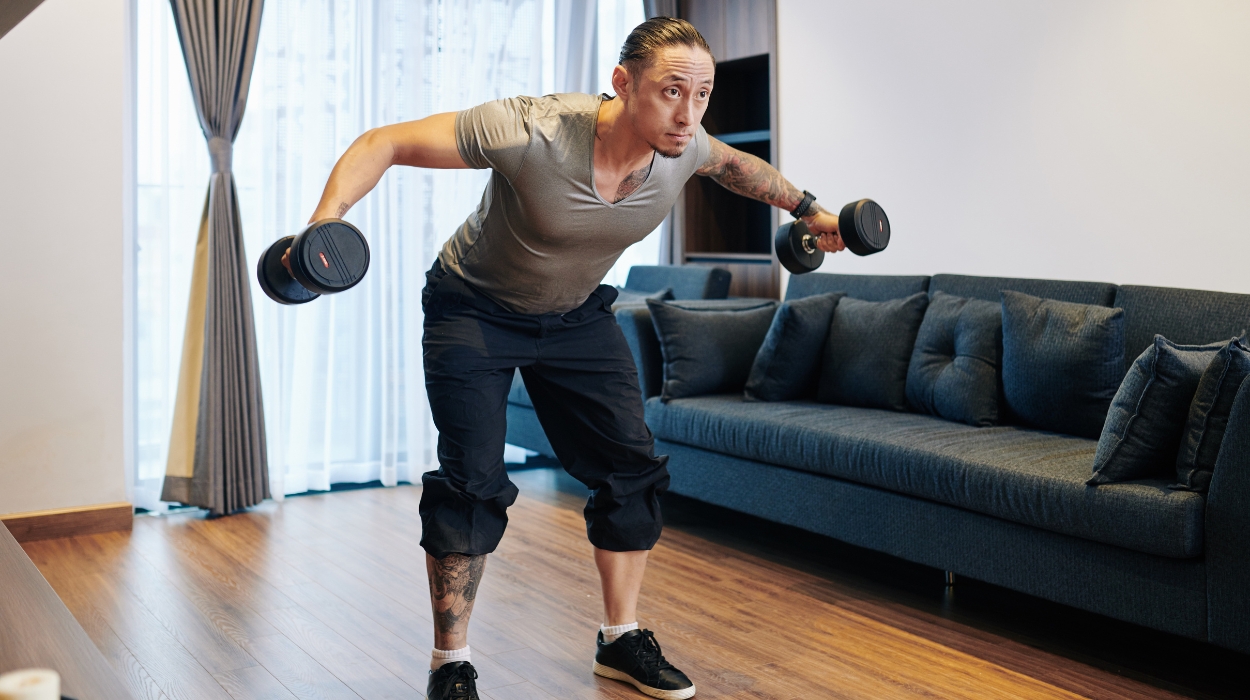
Warm-Up And Stretches
Your constant tension on the muscles will be ready to offer them throughout your lifts after a solid 10-minute warmup. After your warm-up, some stretching of your lower chest muscles can help lower your risk of an accident.
Maintain Muscle Balance
Focus on more than just one set of muscles. By performing a superset, you can balance both sides of your body equally. For example, the lower chest should be lifted first, and then the lats, rhomboids, or trapezius muscles should be lifted.
Pre-Workout Supplements
Your body may be fueled with the proper pre-workout foods (low-fat milk, banana, low-fat yogurt) for muscle mass gain to keep delivering the desired benefits.
Conclusion
The five lower chest workouts will help you achieve your goals, whether they involve increased strength or better pec definition. Make sure your workouts are varied and give your body enough time to recover between each one.
In addition to enhancing your posture, both lower and upper chest exercise encourages a healthy breathing pattern. You can incorporate the best pre-workout nutrients into your workout program for larger, stronger lower pec muscle fibers. The supplements aim to improve your performance by enhancing your stamina, power, and energy.
Frequently Asked Questions
You must follow the path of the lower pectoral muscles’ fibers to develop your lower chest. Lower pectoral muscle fibers from the abdominal head run up and out at an angle from the bottom to the top, towards the humerus.
To dip your lower chest, you should tilt your torso forward somewhat, but not too much. If you lean forward too much, the exercise will feel like a push-up and strike your mid-chest.
You may need to pick the appropriate exercises to target the lower chest fibers if your lower chest isn’t developing, drooping, or lacking shape. We must select workouts that require us to lower our arms across our chest to target this lower chest area.
There are a variety of workouts that can reduce chest fat. Cardio exercises that target various muscle groups, such as cycling, stair climbing, jumping rope, and running outdoors while listening to music, can assist the chest area in reducing extra fat.
Resources
- Rodríguez-Ridao, D., Antequera-Vique, J.A., Martín-Fuentes, I. and Muyor, J.M. (2020). Effect of Five Bench Inclinations on the Electromyographic Activity of the Pectoralis Major, Anterior Deltoid, and Triceps Brachii during the Bench Press Exercise. International Journal of Environmental Research and Public Health, [online] 17(19), pp.7339–7339. doi:https://doi.org/10.3390/ijerph17197339.




